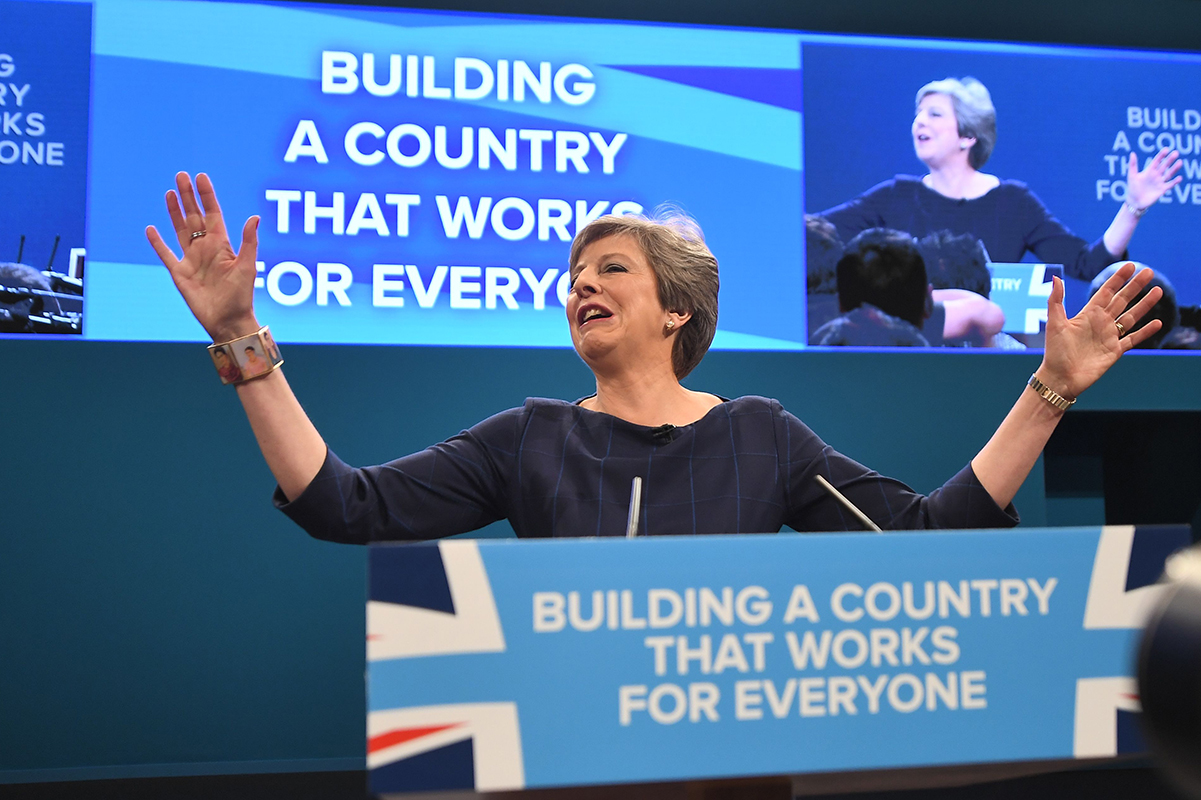 Jules Birch
Jules BirchBalance of funding has been shifted further away from affordable housing
Jules Birch scrutinises Theresa May’s policy announcements
 Jules Birch
Jules BirchYou wait a lifetime for a prime minister to make housing their priority and then she gets handed her P45 while losing her voice with the conference set falling apart around her.
With all that happening around her it was easy to ignore the substance of Theresa May’s speech.
You may have missed it between coughs but for the first time since the 1950s here was a prime minister promising to put housing at the heart of their premiership.
And here was a Conservative prime minister not just promising an extra £2bn for ‘affordable’ housing but even allowing bids for social rent too.
But as the letters slowly dropped off the conference slogan about “building a country that works for everyone”, you wondered how long she will have a premiership to put anything at the heart of.
And even then it is hard to avoid drawing the obvious conclusions from the comparison between an extra £2bn for affordable housing and an extra £10bn for Help to Buy.
A Conservative press release issued to the lobby after the speech provides a bit more detail but also sows a bit of confusion to my mind.
The release says that the extra money will take the Affordable Homes Programme for 2016/21 to £9.1bn and that “this extra £2bn will lever in a total investment of £5bn (public and private) in new housing”.
It goes on: “In parts of the country where rents are high, we will allow bids for social rent, which are further below market rents.”
And then: “With a typical subsidy of £80,000, £2bn investment can supply around 25,000 homes available for social rent.”
The Conservative Party’s media management seems almost as shambolic as its set construction here.
First, they allowed the story to be over-briefed as the “rebirth of council housing” in the media this morning.
Then they suggest that the rebirth (itself a rehash of the “revolution” promised in the election campaign in May) actually amounts to just 5,000 homes a year).
But I wonder if this bit is actually getting under-briefed and is just an indication of what it would mean with a typical social housing grant rate.
The rest of the release strongly implies that social rent will only be part of a wider “affordable” offer, which will presumably mean more homes for the same money.
And unlike the “revolution”, the “rebirth” appears to come with new money attached (details to be confirmed in the Autumn Statement, presumably).
So could this be the first time ever that a politician has given a target for new homes that is smaller than it could be? That’s certainly the impression given by Ms May:
“We will encourage councils as well as housing associations to bid for this money and provide certainty over future rent levels. And in those parts of the country where the need is greatest, allow homes to be built for social rent, well below market level.”
Apart from that strong hint about a future rent formula, I also wonder if there is more to come on this. There was no mention of other policies that featured in the 2017 election manifesto.
These included the highly significant one of strengthening compulsory purchase powers to allow councils to buy land at closer to existing use value and the more worrying one of selling off rental homes after a fixed term.
There was also no mention of the ghosts from 2015, such as the extension of the Right to Buy and the forced sales of council houses that will discourage councils from applying for this “new generation of council housing”.
“The new money would seem to only partially restore the cuts in investment made since 2010.”
Welcome though it is to see more money for affordable housing and a recognition of the need for social rent, the new money would seem to only partially restore the cuts in investment made since 2010.
And in any case it does not comes close to Ms May’s real priority of fixing the housing market.
May had nothing new to offer on this beyond what Sajid Javid said on Sunday but what was striking was the priority she gave it in what she called “renewing the British dream” and reversing the trend in which children are poorer than their parents and have no chance of getting on the housing ladder:
“So I will dedicate my premiership to fixing this problem – to restoring hope. To renewing the British dream for a new generation of people. And that means fixing our broken housing market.”
She said the government had made a start by increasing the number of new homes and was promising more through the Housing White Paper “but the election result showed us that this is not nearly enough”.
The £2bn and the modest measures for private renters are part of this but it’s the extra £10bn for Help to Buy equity loans by 2021 that has really grabbed the attention and sent house builder share prices even higher.
Some have argued that the government should simply spend the £10bn on affordable housing instead but that misses the point that these loans are financial instruments that do not count as borrowed or spent until they are repaid (or not).
As things stand, it is still possible that the Treasury will make a profit when the existing equity loans are repaid.
However, the more money that gets pumped into the scheme, the greater the risk of buyers of over-priced new builds getting stuck in a housing market downturn and of the Treasury being left with losses.
That risk seems especially acute in London, where buyers are eligible for 40% loans but there are signs that prices are falling.
“Help to Buy is like a drug for house builders and they are dependent on it for 40% of their sales.”
And even if that risk is avoided, the government is still left doubling its commitment to a scheme that we know is poorly targeted and benefits many better-off households who could have afforded to buy without it.
Help to Buy is like a drug for house builders and they are dependent on it for 40% of their sales. As with all drugs, the worry is what happens when it gets withdrawn.
That was enough of a concern for Labour to propose an extension to 2027 in its election manifesto, though in a scaled-back form.
The Conservatives have in effect given Help to Buy a re-up. They have doubled the dose and with it the scale of the potential cold turkey that the industry will eventually face.
And, astonishingly, the new money seems to come without any strings attached apart from an exhortation from Ms May to house builders to “do your duty to Britain and build the homes our country needs”.
The prime minister may find that their duty to their shareholders counts for rather more than her conference slogan.
And for all the good news on offer in the speech, the Conservative conference as a whole has shifted the balance of funding even further in favour of private, rather than affordable, housing.
Jules Birch, award-winning blogger



